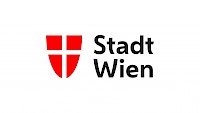Model Based Estimation of the Immunization Level in Austria
Based on scientific work (BMC Infectious Diseases https://doi.org/10.1186/s12879-020-05737-6, Scientific Reports www.nature.com/articles/s41598-022-06771-x ), a model-based assessment of the effect of natural and vaccine immunization with respect to infection has been made publicly available and updated monthly. We have stopped these updates due to a combination of of reduced quantity and quality of data and increasing complexity of influencing factors. As we explained in our respective news, the validation of an immunity level estimate for Austria is currently quantitatively not meaningful due to the mentioned factors.
We concluded the public update with a report of accumulated experience, which you can download here (German only).
Last public update of model based estimation on August 1st, 2022
Model-based estimation of the immunization level against the Omicron BA.2 (csv file) and BA.4/5 (csv file) subtype, as of 2022-08-01 - plot Omicron BA.2, plot Omicron BA.4/5.

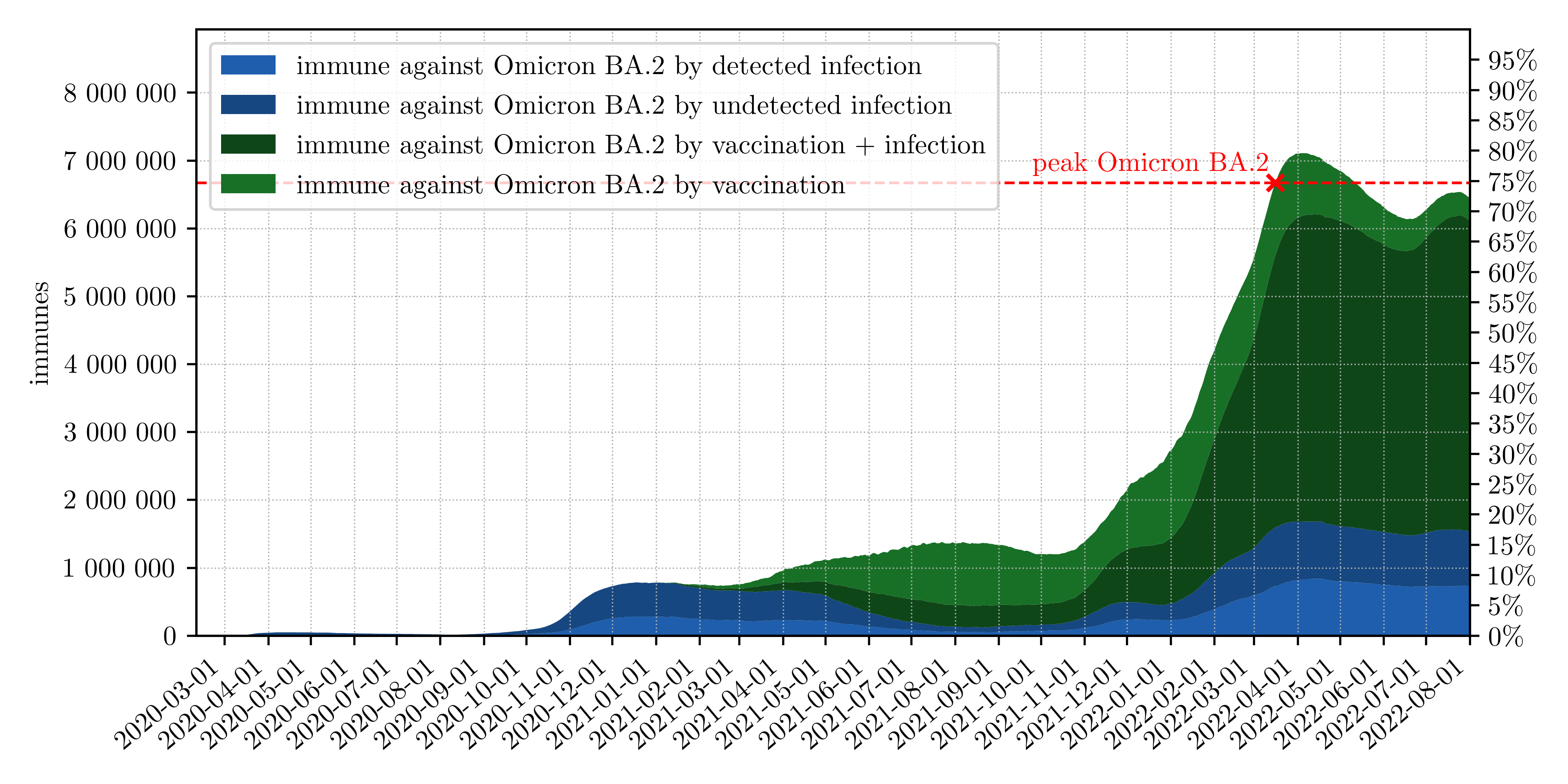
Effective level of immunisation against Omicron BA.2 subvariant, with cause of immunity. The dashed line incdicates the level required for case peak. It needs to be intrepreted in the light of the policies and seasonality
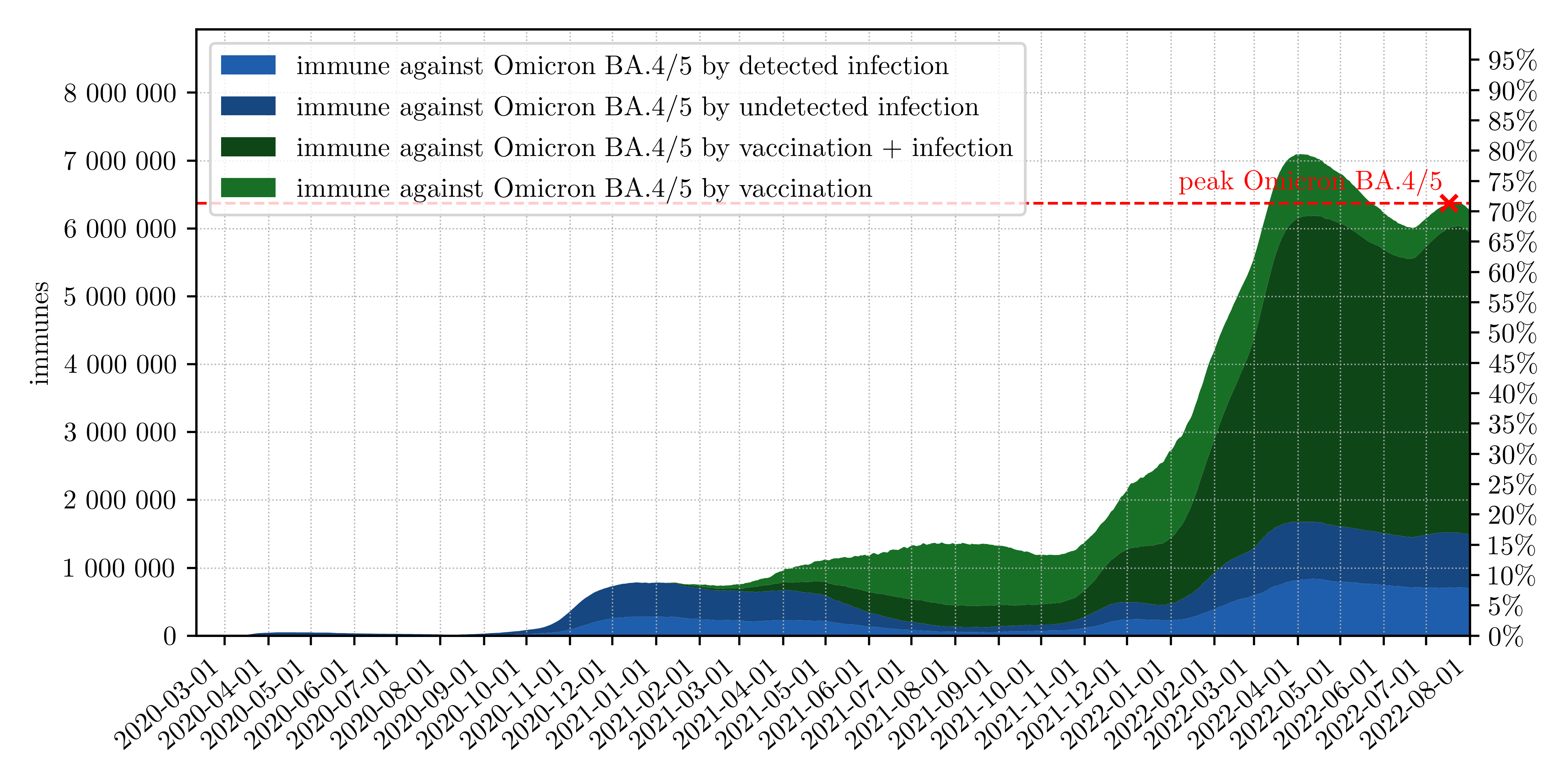
Effective level of immunisation against Omicron BA.4/5 subvariants, with cause of immunity. The dashed line incdicates the level required for case peak. It needs to be intrepreted in the light of the policies and seasonality
By August 1st, 2022, about 72% of the Austrian population were immune against confirmed infection with the Omicron BA.2 subtype, whereas only 70% of the population was Immune against the BA.4/5 subtypes. Considering recent policy related changes, the strong decay of immunity level (cause by the strong decay of case numbers) needs to be interpreted with caution. Anyway, the corresponding assumptions for BA.4/5 are still very vague and will be updated in as soon as new studies are published. The current level leads to a reduction of the effective reproductive number by about 65% (BA.2) or 63% (BA.4/5) compared to a fully susceptible population (or the current effective reproductive number would be more than 188% or 168% higher in a fully susceptible population).
The following graph, illustrate the decline in immunity against the variant over time compared to total vaccinated and recovered numbers, respectively (link to a Picture showing the model assumptions for immunity and immunity waning):
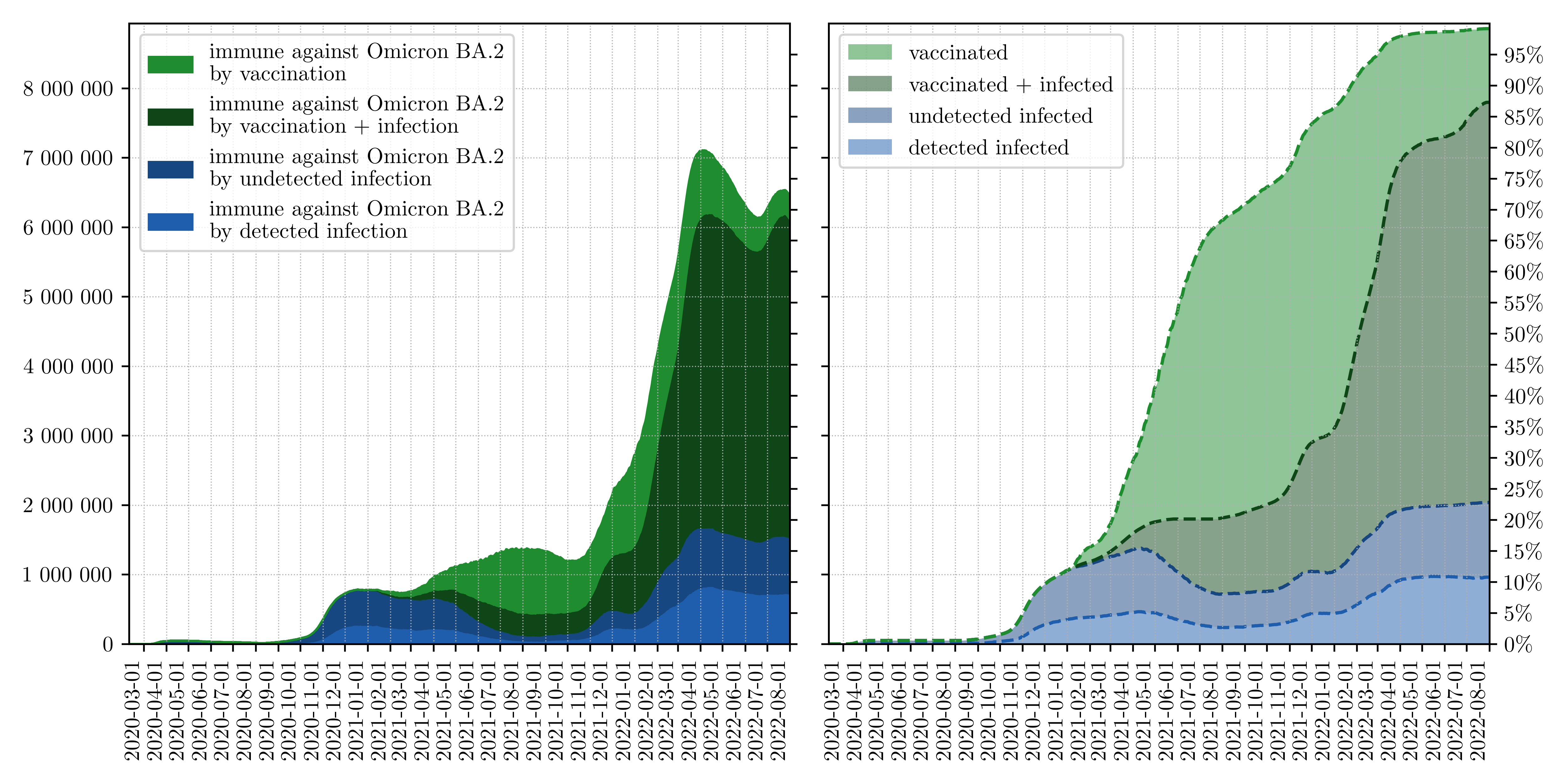
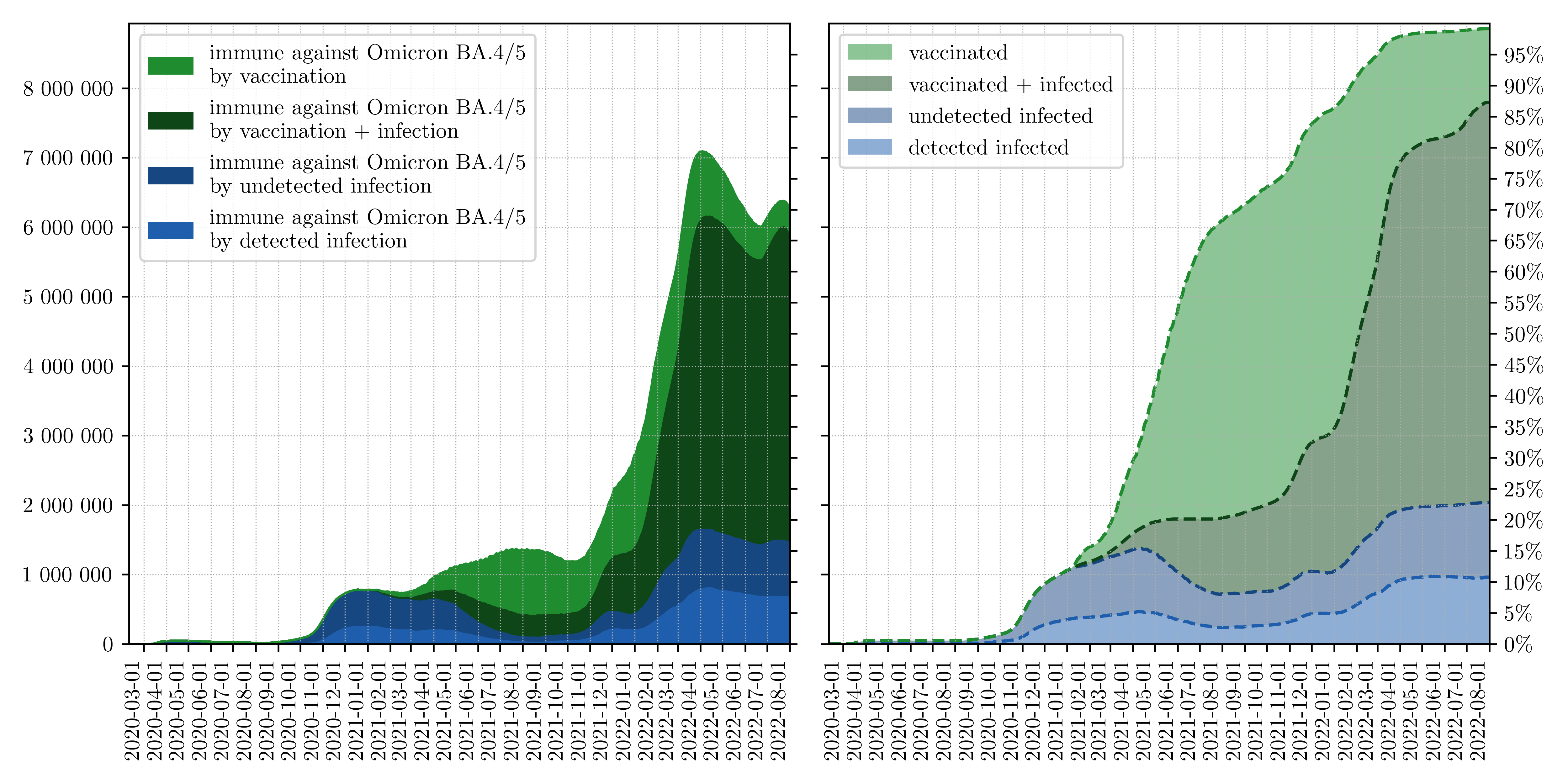
As of July 1st immunity estimates against the Omicron BA.4/5 subtype were added.
As of April 13th 2022 we improved the quality immunization parameters of the agent-based model using the results of a a recent study about waning immunity (https://www.dwh.at/news/modellerweiterung_dynamik_des_immunitaetsverlaufes_abschaetzbar/). Moreover, we added assumptions about immune evasivenss (reduced vaccine effectivenss and higher reinfection rate) for the BA.2 subtype. These estimates are based on calibration results, expert optinions and a recent Danish study (https://www.medrxiv.org/content/10.1101/2022.01.28.22270044v1). Since no evidence is available for waning of protection of BA.2-recovered against BA.2 reinfection, the corresponding model parameters are highly uncertain.
As of February 1st 2022, parameters for vaccine and recvery effectiveness were updated with surveillance data from Austria. This led to more conservative assumptions and reduced overall immunity level against Omicron, in specific, BA.1 (see: current status of effectiveness of vaccination and recovery).
As of January 1st 2022, the estimate of the immunization level has been adjusted to current variants and is available twice during phases of variant dispersal: once for the current variant and once for the new variant, that is, the Omicron variant. Based on studies from the UK (UK Health Security Agency, Technical Briefing 31), the effectiveness of vaccinations (with the exception of booster vaccinations) and recoveries were reduced by 50% from their respective baseline values (see also figure on assumptions). The effectiveness of booster vaccinations was reduced by 20%.
As of December 1, 2021, the model was improved based on data on loss of immunity after vaccination (see figure for assumptions).
As of October 1, 2021, the decay rate of antibodies after recovery was again increased from (exactly) 300 days to 700 days on average (exponentially distributed). This resulted in a slight increase in immune recovered.
As of July 1, 2021, an adapted graph will be introduced. This takes into account the waning of immunity of recovered persons. It can be seen by the decrease of the blue curves (immune by past un-/detected infection) from April 2021. This effect is compensated by the start of the vaccination program (incl. recovered persons), which are shown by the green curves.
Model-based estimation of the immunization level against the Omicron BA.2 (csv file) and BA.4/5 (csv file) subtype, as of 2022-07-01 - plot Omicron BA.2, plot Omicron BA.4/5.
Model-based estimation of the immunization level against the Omicron BA.2 subtype, as of 2022/06/01 (csv file) - plot Omicron BA.2.
Model-based estimation of the immunization level against omicron BA.1 and BA.2 subtype, respectively, as of 2022/05/01 (csv file) - plot Omicron BA.1, plot Omicron BA.2.
Model-based estimation of the immunization level against omicron BA.1 and BA.2 subtype, respectively, as of 2022/04/13 (csv file) - plot Omicron BA.1, plot Omicron BA.2.
Model-based estimation of the immunization level against delta and omicron, respectively, as of 2022/03/01 (csv file) - plot Delta, plot Omicron.
Model-based estimation of the immunization level against delta and omicron, respectively, as of 2022/02/01 (csv file) - plot Delta, plot Omicron.
Model-based estimation of the immunization level against delta and omicron, respectively, as of 2022/01/01 (csv file) - plot Delta, plot Omicron.
Model Based Estimation of the Immunization Level in Austria from 12/01/2021 (csv-file) - Plot
Model Based Estimation of the Immunization Level in Austria from 11/01/2021 (csv-file) - Plot
Model Based Estimation of the Immunization Level in Austria from 10/01/2021 (csv-file) - Plot
Model Based Estimation of the Immunization Level in Austria from 09/01/2021 (csv-file) - Plot
Model Based Estimation of the Immunization Level in Austria from 08/01/2021 (csv-file) - Plot
Model Based Estimation of the Immunization Level in Austria from 07/01/2021 (csv-file) - Plot
Model Based Estimation of the Immunization Level in Austria from 06/01/2021 (csv-file) - Plot
Model Based Estimation of the Immunization Level in Austria from 05/01/2021 (csv-file) - Plot
Model Based Estimation of the Immunization Level in Austria from 04/01/2021 (csv-file) - Plot
Model Based Estimation of the Immunization Level in Austria from 03/01/2021 (csv-file) - Plot
To model the occurrence of the contribution of the effect of vaccination: percentage values of efficacy as well as duration of delay of the effect influence the modelled immunisation of the population. The assumptions are summarised here: see Picture For more information on vaccination modelling, please refer to the COVID-TAV project (https://www.dwh.at/news/covid-19-entscheidungsgrundlage-fur-gezielte-impfstrategien-vorgestellt/, https://www.umit-tirol.at/page.cfm?vpath=departments/public_health/tavcovid19&switchLocale=de_AT), for more information.
Funded by the Austrian Research Promotion Agency (FFG) COVID-19 Emergency Call, the Vienna Science and Technology Fund WWTF-COVID-19 Rapid Response Funding, the Medical Scientific Fund of the Mayor of the City of Vienna

